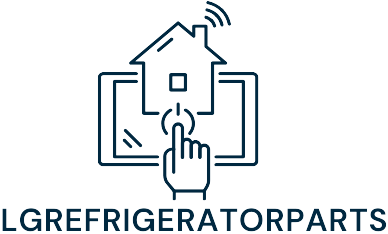Table of Contents
ToggleNavigating the world of multifamily housing law might feel like trying to find a parking spot in a crowded lot—frustrating and filled with unexpected twists. From tenant rights to landlord responsibilities, the legal landscape is as complex as a game of Monopoly, but with real stakes. Whether you’re a seasoned property manager or a curious tenant, understanding these laws isn’t just a good idea; it’s essential.
Overview of Multifamily Housing Law
Multifamily housing law encompasses various regulations that govern residential properties with multiple units. These laws address tenant rights, landlord obligations, zoning, and property management practices. Regulations affect not only urban areas but also suburban developments.
Tenant rights include protections against discrimination, eviction rules, and safety standards. Landlords must comply with fair housing laws that prohibit practices based on race, color, religion, sex, family status, or national origin. Additionally, specific local ordinances may impose stricter requirements on landlord conduct and property conditions.
Regulatory frameworks vary by state and municipality. Local housing codes often dictate property maintenance standards, tenant living conditions, and the legal process for evictions. Understanding these frameworks benefits both tenants and property managers, ensuring compliance and promoting healthy living environments.
Affordability and rental prices are critical components of multifamily housing law. Many jurisdictions implement rent control measures to regulate rental increases and protect tenants from sudden price hikes. Legislatures frequently evaluate these policies to balance the interests of tenants and landlords.
Additionally, Multifamily housing laws often include zoning regulations that determine where multifamily homes can be constructed. These regulations aim to manage community density and maintain neighborhood character. It is essential for developers and investors to navigate these complex zoning laws to avoid project delays and legal disputes.
Multifamily housing law plays a vital role in shaping residential communities. An awareness of rights and responsibilities fosters better relationships between tenants and landlords, leading to more stable living situations.
Key Regulations and Legislation
Multifamily housing law includes vital regulations that guide tenant rights and landlord responsibilities. Understanding these laws ensures compliance and promotes positive living environments.
Fair Housing Act
The Fair Housing Act prohibits discrimination based on race, color, religion, sex, national origin, familial status, or disability. Protections apply to all housing-related activities, including renting, selling, and financing multifamily residences. Furnishing equal housing opportunities creates fair access for all individuals. Penalties for violations can include fines and damages, reinforcing the Act’s importance.
State and Local Laws
State and local laws vary significantly, impacting multifamily housing regulations. Many jurisdictions implement additional protections against discrimination beyond federal standards. Specific laws often govern security deposits, eviction processes, and tenant safety requirements. Familiarity with these local regulations is crucial for both landlords and tenants, as compliance ensures smoother property management and safeguards tenant rights.
Landlord-Tenant Relationships
Understanding landlord-tenant relationships is essential for maintaining harmony in multifamily housing. These relationships revolve around clearly defined rights and responsibilities.
Rights and Responsibilities
Tenants possess specific rights protected under various housing laws. They have the right to a habitable living environment, privacy, and freedom from discrimination. Landlords, on the other hand, must ensure that units meet safety and health standards while respecting tenant rights. They are obligated to provide timely maintenance and address repair requests. It is crucial for both parties to communicate effectively and understand their respective rights and obligations. Disputes often arise when either party is unaware of their legal entitlements.
Lease Agreements
Lease agreements serve as the foundation of landlord-tenant relationships. These legally binding documents outline terms related to rent, duration, and property use. Both tenants and landlords must review these agreements thoroughly before signing. Clarity on pet policies, maintenance responsibilities, and rules for shared spaces is vital. Changes to the lease may require consent from both parties. Rent increases, eviction procedures, and security deposit terms also find mention in these agreements. Familiarity with lease terms helps prevent misunderstandings and fosters a cooperative living environment.
Zoning and Building Codes
Zoning regulations establish where multifamily homes can be constructed within a community. They directly influence neighborhood density and character. Local zoning laws dictate property classifications, which range from residential to commercial uses. Different municipalities enforce varying codes regarding multifamily developments.
Building codes outline safety and structural integrity requirements for construction. These codes ensure compliance with standards for plumbing, electrical systems, and overall health. Builders must present plans that adhere to these standards before obtaining permits. Many states also require inspections throughout the building process to confirm compliance.
Community input plays a significant role in the zoning process. Residents often participate in public hearings to voice opinions about proposed multifamily developments. The feedback collected can shape zoning decisions and affect local housing availability, impacting affordability.
Developments often face restrictions based on zoning classifications. Regulations may limit building height, lot size, and parking spaces, affecting how many units can occupy a given area. Adjustments to these regulations sometimes require a zoning variance, a formal request for exceptions.
Understanding local zoning and building codes benefits both landlords and tenants. Compliance with these regulations prevents future disputes and ensures safe living conditions. It allows property managers to better navigate the complexities of construction and tenant needs while fostering community relationships.
Landlords and property managers must stay updated on any changes in zoning regulations. Active communication with local authorities aids in avoiding compliance issues. Such proactive measures contribute to creating stable housing opportunities within communities.
Challenges in Multifamily Housing Law
Challenges in multifamily housing law arise from various sources, including legal disputes and compliance issues. Understanding these hurdles is essential for effective property management and fostering positive landlord-tenant relationships.
Legal Disputes
Legal disputes frequently occur between landlords and tenants due to misunderstandings or differing interpretations of lease agreements. Disagreements may involve rent payments, security deposits, or maintenance responsibilities. Lawsuits can lead to costly legal fees and extended court proceedings. Both parties often face delays in resolving issues, impacting housing stability. Providing clarity within lease terms can prevent many disputes. Additionally, mediation and communication between landlords and tenants can facilitate timely resolutions.
Compliance Issues
Compliance issues pose significant challenges within the realm of multifamily housing law. Landlords must navigate various regulations, including local zoning laws and safety codes, to maintain lawful operations. Failure to comply can result in fines, penalties, or even litigation. Understanding specific local laws creates a foundation for compliance. Maintaining accurate records of inspections and repairs contributes to meeting legal standards. Staying informed about changes in housing regulations helps landlords uphold legal obligations while fostering tenant satisfaction.
Navigating multifamily housing law requires a solid understanding of tenant rights and landlord responsibilities. This knowledge not only fosters healthy relationships but also promotes stable living environments. As laws and regulations continue to evolve, both tenants and landlords must stay informed to ensure compliance and protect their interests.
Awareness of local regulations and effective communication can significantly reduce disputes and enhance the overall rental experience. By prioritizing clarity in lease agreements and understanding the implications of zoning and safety codes, all parties can contribute to a more equitable and harmonious community. Multifamily housing law is complex, but with the right insights, it can lead to better outcomes for everyone involved.



